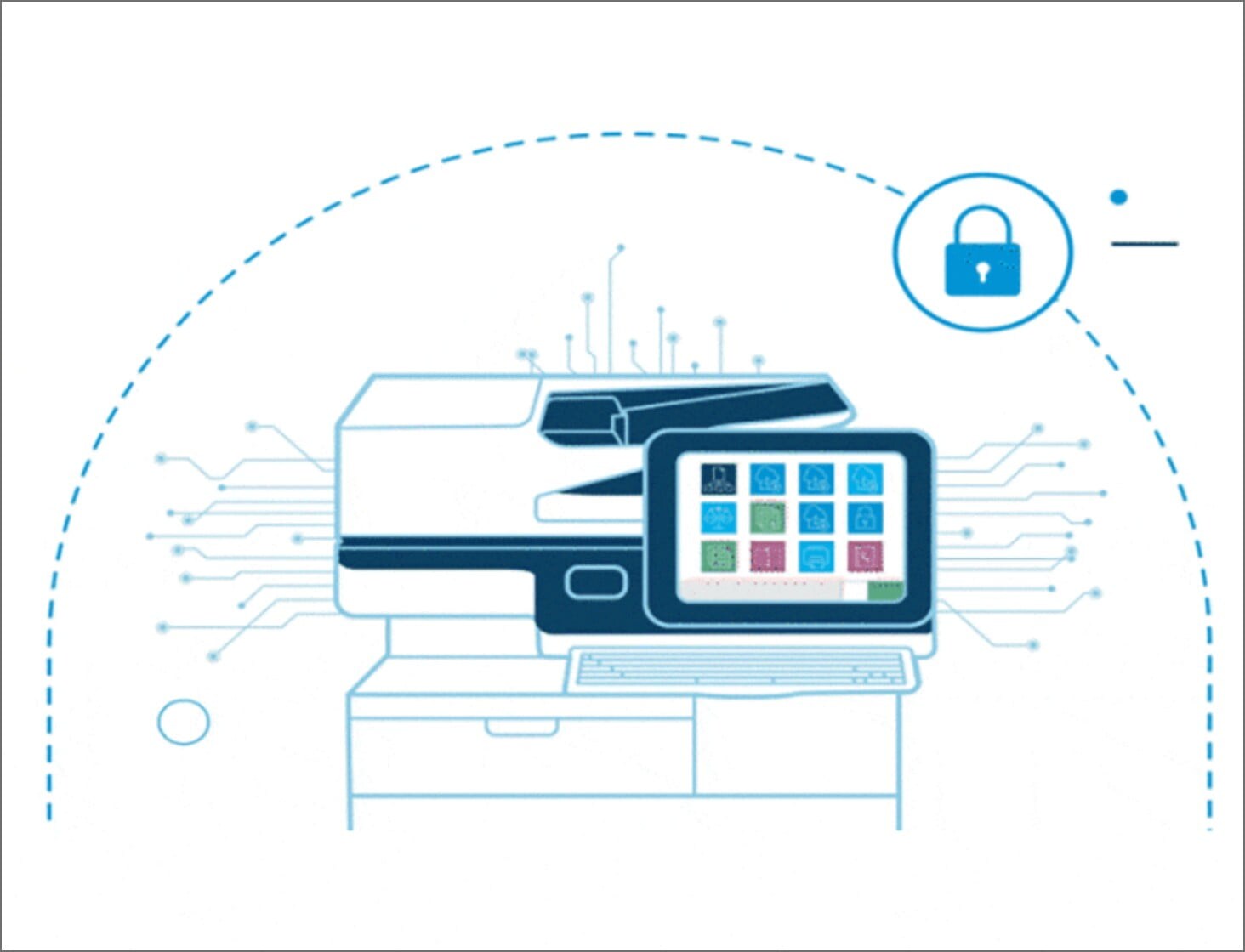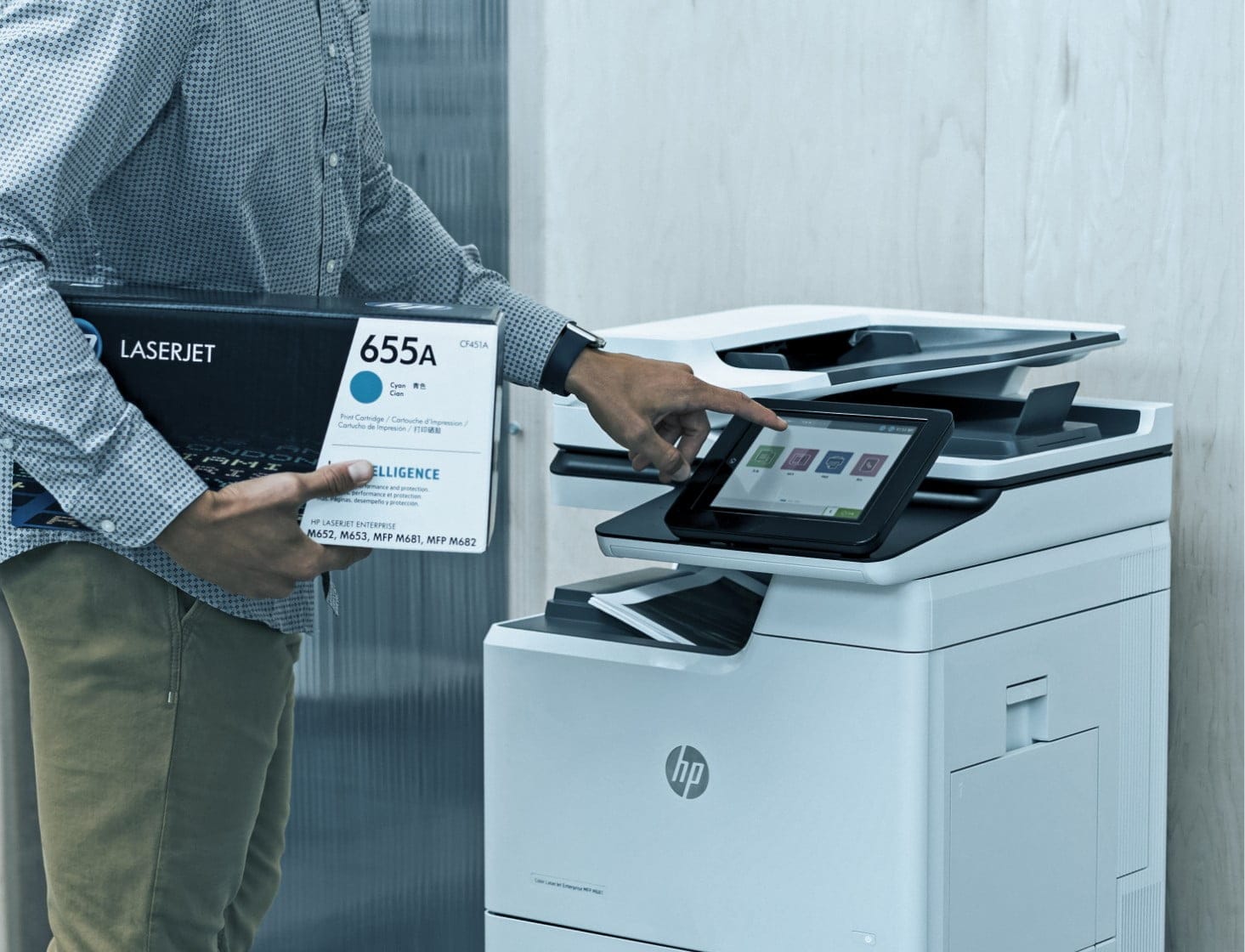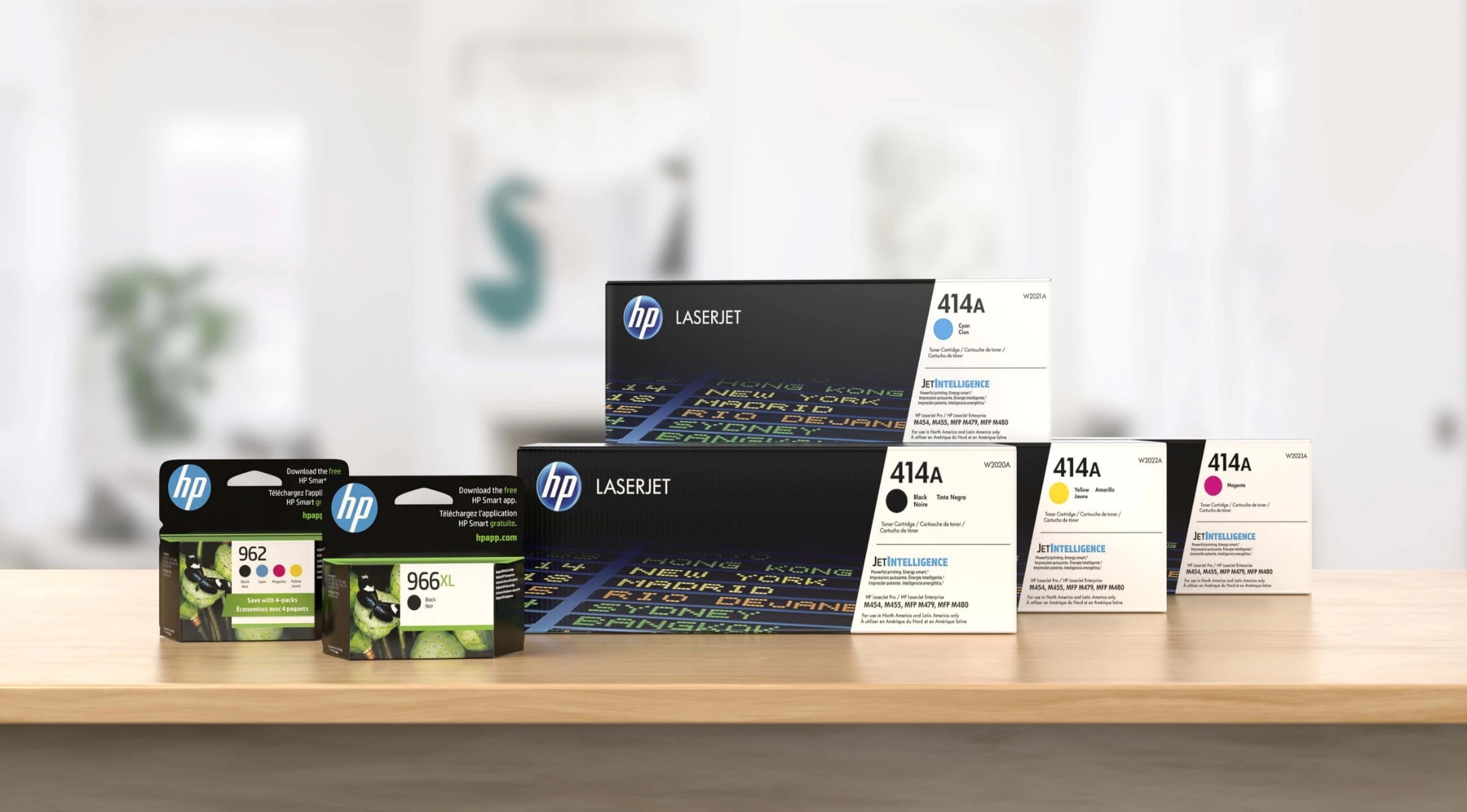Secure printer cartridges
you can trust
*The content on this page applies to HP Office-class printing systems which are select Enterprise and Managed devices with FutureSmart firmware 4.5 and above, Pro devices, LaserJet models 200 and up, with respective Original HP Toner, PageWide, and Ink Cartridges. It does not include HP integrated printhead ink cartridges. Digital supply-chain tracking, hardware, chips and packaging security features vary locally by SKU. Learn more.
Find out how Original HP office cartridges help protect your printer and your data
Find out how Original HP office cartridges help protect your printer and your data
Shut the door
on circling cyber
threats
HP Wolf Security offers comprehensive endpoint protection and resiliency that starts at the hardware level and extends across software and services.
Learn more
Resources
- HP office printer cartridge security fact sheet
- HP office printing devices security matrix
- Bugcrowd HP Print Cartridge Bug-Bounty Findings
- ISO 20243:2018 O-TTPS Supply Chain Security Certificate for Original HP Print Cartridges from HP Inc
- Keypoint Intelligence white paper "Protecting Enterprise Printer Cartridges: HP Print ISO 20243 Certification Extends Security into the Supply Chain"
FAQ
How does HP help secure the packaging?
Specialized construction designs and glues contribute to tamper-evident packaging. The security label on the box incorporates both manual and machine-readable elements, including an identifier that is tracked through the HP supply chain. HP adds further security with a zip-strip sealed inner package and tamper-evident label on the tear strip.1 To learn more about HP anti-counterfeit measures for ink and toner cartridges, see hp.com/go/anticounterfeit.
How does HP help ensure enterprise cartridge chip security?
HP chips are designed for security: Only Original HP supplies contain a chip with HP proprietary firmware that is designed from the bare metal to be secure and resistant to tampering. Imitation supplies may include chips of unknown origin that may employ untrusted firmware.
HP chips contain tamper-resistant HP firmware: The HP proprietary firmware on cartridge chips cannot be modified by third parties after production. Some non-HP cartridge and chip suppliers claim their chips can be reprogrammed, and even sell devices online that can modify data elements. Non-HP chips can use general-purpose microprocessors with firmware that can be modified or replaced.
HP chips use secure smart card technology: HP office cartridge chips help protect your printer with secure smart card technology that is commonly found on chip-based credit and debit cards. Original HP office printer cartridges introduced since 2015 use smart card technology for maximum data integrity with resistance to tampering and hacking. Non-HP chips may use general-purpose microprocessors, which can be vulnerable.
Printer verification of authenticity: Smart card technology includes a printer verification of authenticity for confidence that supplies are Original HP.
HP chips are manufactured in secure facilities: Chips are certified as EAL5+, and/or manufactured in facilities where products have achieved EAL5+ certification.
How does HP help protect my office printer?
HP printers have the industry’s strongest security, with four key technologies that are always on guard, continually detecting and stopping threats while adapting to new ones. Only HP Enterprise printers automatically self-heal from attacks by triggering a reboot—IT doesn’t need to intervene.
- HP Sure Start—checks operating code. The BIOS is a set of boot instructions used to load critical hardware components and initiate firmware. HP Sure Start technology works behind the scenes by validating the integrity of the BIOS when powering up. If a compromised version is discovered, the device restarts using a safe “golden copy” of its BIOS.
- Run-time intrusion detection—monitors memory activity. Memory activity is monitored in real time, right when most attacks occur, to continually detect and stop attacks. Common Criteria certified to check for anomalies during complex firmware and memory operations, automatically stop intrusions, and reboot to heal itself.
- HP Connection Inspector—inspects network connections. Stop malware from “calling home” to malicious servers, stealing data, and compromising your network. HP Connection Inspector evaluates outgoing network connections to determine what’s normal, stop suspicious requests, and automatically trigger a self-healing reboot.
- Whitelisting—checks for authentic firmware, digitally signed by HP. Because compromised firmware could expose your whole network to an attack, whitelisting helps ensure the code that coordinates your printer’s functions, controls, and security hasn’t been tampered with. Firmware is automatically checked during startup, and if an anomaly is detected, the device reboots to a secure, offline state and notifies IT.
Learn more: hp.com/go/PrintersThatProtect and https://www8.hp.com/h20195/V2/getpdf.aspx/4AA6-1168ENW.pdf
Footnotes and disclaimers
- See ISO/IEC 20243:2018 Open Trusted Technology Provider™ Standard Certification Register certification.opengroup.org/register/ottps-certification







